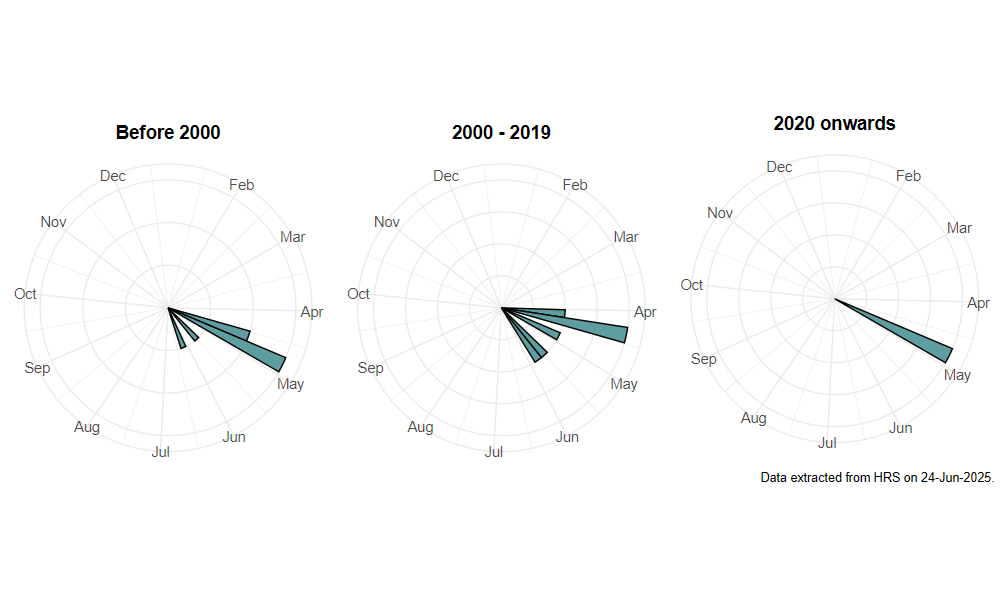Cheilosia uviformis Becker, 1894
Identification
Identification difficulty = 5. ![]()
![]() according to Ball & Morris, 20241
according to Ball & Morris, 20241
Synonymy
Cheilosia argentifrons Hellén, 1914.
Biology
The larva remains undescribed. Speight (1988)2 concludes that this species is associated with deciduous woodland, and in most cases with areas that are seasonally flooded. Males hover 7-10m above the ground, and females have been found sitting inconspicuously on tussocks of dead grass. Adults visit spring-flowering shrubs such as sallows Salix sp. and Hawthorn Crataegus sp.
Flight period
The following plots show the number of unique records per week excluding those reported to be of immature stages.

Status
DATA DEFICIENT - Ball & Morris, 20143.
Distribution
Originally found in Ireland in 1985, it has subsequently been found in Scotland, Yorkshire and Derbyshire (Stubbs, 1996[^UKP3LFL6
]; Speight, 19864; Whiteley, 19885). There are too few records as yet to allow any interpretation of its status and distribution.

-
Ball, S., & Morris, R. (2024). Hoverflies of Britain and Ireland. WILDGuides (3rd ed.). Oxford: Princeton University Press. ↩
-
Speight, M. (1988). Syrphidae known from temperate Western Europe: potential additions to the fauna of Great Britain and Ireland and a provisional species list for N. France. Dipterists Digest (first series), 1, 2–35. ↩
-
Ball, S., & Morris, R. (2014). A review of the scarce and threatened flies of Great Britain. Part 6: Syrphidae. ( No. 9). Species status (pp. 1–130). Peterborough: JNCC. ↩
-
Speight, M. (1986). Cheilosia argentifrons (Diptera: Syrphidae) new to Ireland: Donacia cinerea (Coleoptera: Chrysomelidae) and Palloptera muliebris (Diptera: Pallopteridae), presence confirmed in Ireland. Irish Naturalists Journal, 22, 159–60. ↩
-
Whiteley, D. (1988). Cheilosia argentifrons Hellén – a hoverfly new to Derbyshire and Great Britain. Derbyshire Entomological Society Quarterly Journal, 93, 5. ↩